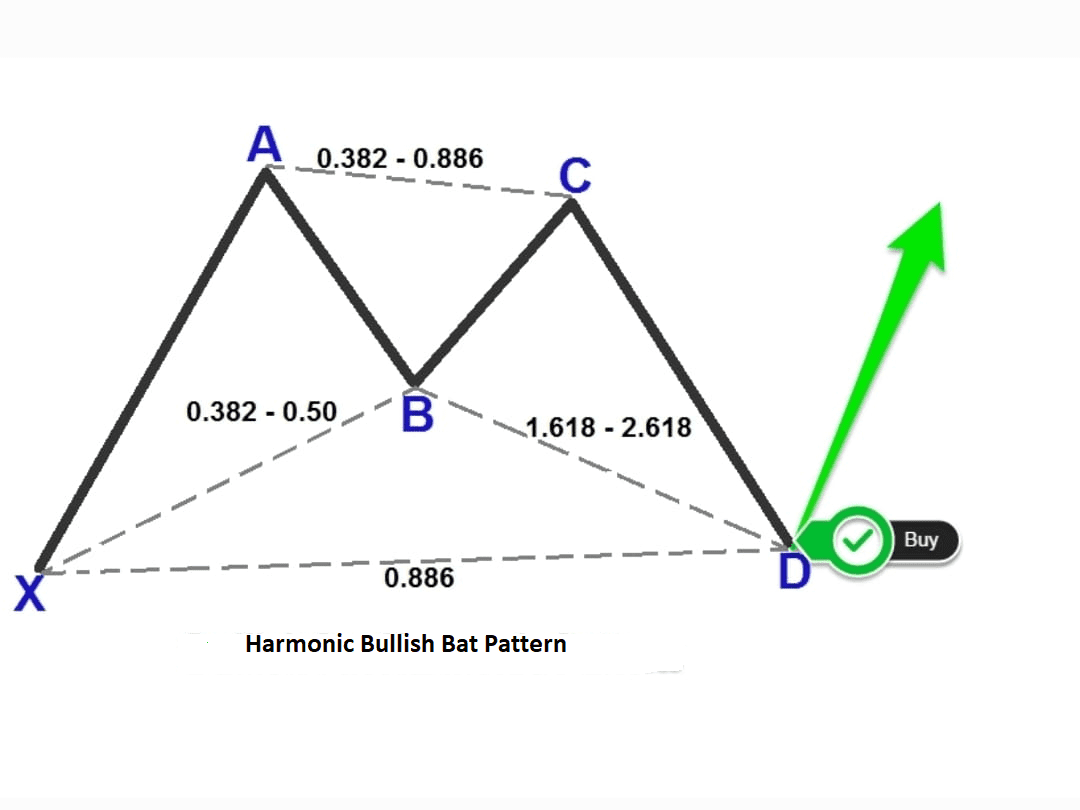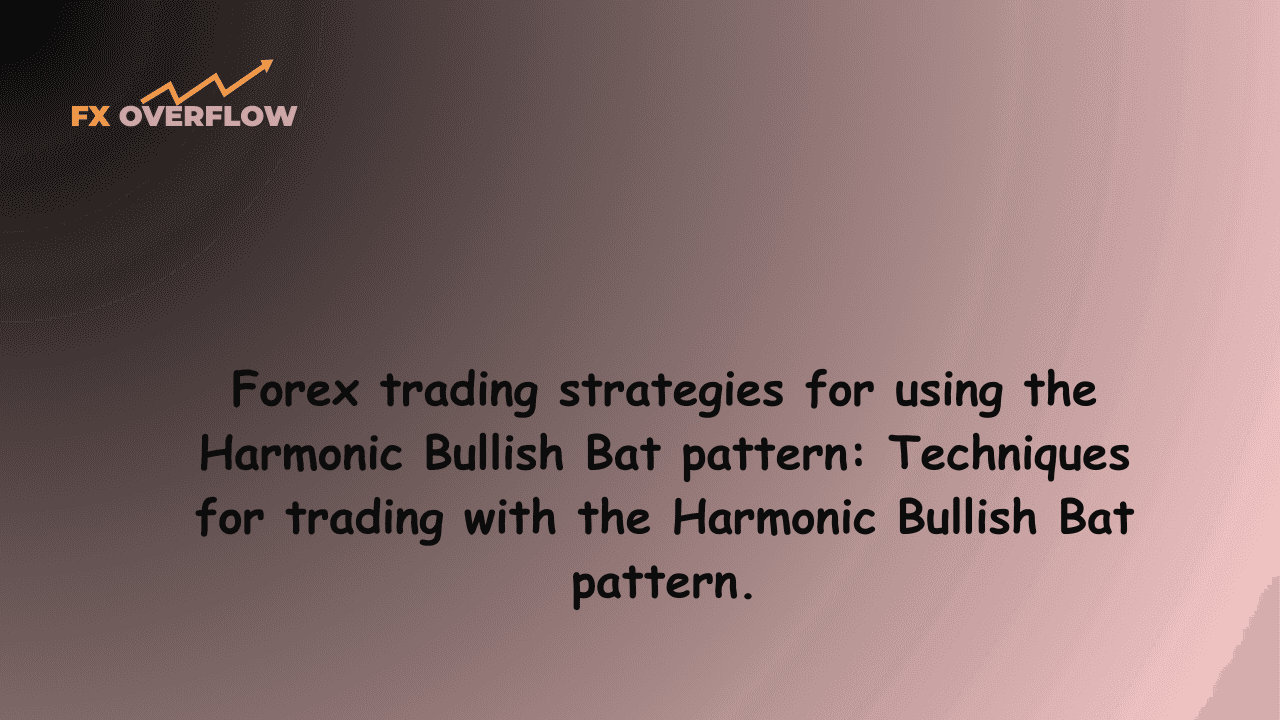Forex trading strategies for using the Harmonic Bullish Bat pattern: Techniques for trading with the Harmonic Bullish Bat pattern.
In the realm of forex trading, where market dynamics constantly evolve, traders seek patterns that can provide a strategic edge in their pursuit of profits. One such pattern that has gained prominence is the Harmonic Bullish Bat pattern. Characterized by its distinctive structure and alignment with Fibonacci ratios, the Harmonic Bullish Bat pattern offers traders a systematic approach to identifying potential trade setups. In this article, we delve into the intricacies of the Harmonic Bullish Bat pattern and explore techniques for effectively integrating it into trading strategies.
Table Content
I. Understanding the Harmonic Bullish Bat Pattern
II. Techniques for Trading with the Harmonic Bullish Bat Pattern
1. Identifying the Pattern
2. Confirming Confluence
3. Entry and Stop Placement
4. Setting Price Targets
5. Risk Management and Position Sizing
6. Practice and Back testing
7. Patience and Discipline
III. Footnote
Understanding the Harmonic Bullish Bat Pattern
The Harmonic Bullish Bat pattern is a specific formation within the realm of harmonic trading, a methodology that involves the use of Fibonacci retracement and extension levels to identify potential reversal points in the market. This pattern is named after its resemblance to a bat's wings, with its structure consisting of precise Fibonacci levels.

The key characteristics of the Harmonic Bullish Bat pattern include:
- Leg AB: This is the initial price move that starts the pattern. It could be a strong uptrend or downtrend.
- Leg BC: This leg is a retracement of the AB leg. It usually retraces to a Fibonacci level, often the 38.2% or 50% retracement level.
- Leg CD: This is the final leg of the pattern, extending from the BC leg. It generally extends to a Fibonacci extension level of 88.6% of the XA leg. This extension level is crucial for differentiating the Bullish Bat pattern from other harmonic patterns.
- Point D: The convergence point of the CD leg with other Fibonacci ratios, often including the 88.6% XA extension level and the 38.2% BC retracement level. This point serves as the potential reversal point and entry for traders.
Techniques for Trading with the Harmonic Bullish Bat Pattern
Trading the Harmonic Bullish Bat pattern involves a combination of technical analysis, risk management, and a disciplined approach. Here are some techniques to effectively trade this pattern:
1. Identifying the Pattern
The first step is to accurately identify the Harmonic Bullish Bat pattern on the price chart. This requires a keen eye for detail and an understanding of Fibonacci ratios. Utilize charting software with pattern recognition capabilities or manually draw Fibonacci retracement and extension levels to identify potential patterns.
2. Confirming Confluence
To increase the probability of a successful trade, seek confluence between the potential reversal point (Point D) and other technical indicators. Look for additional support and resistance levels, trendlines, or candlestick patterns that align with the Harmonic Bullish Bat pattern. A higher level of confluence adds strength to the trade setup.
3. Entry and Stop Placement
The entry point for a long trade is typically at or near Point D. However, due to market volatility, entering directly at Point D can be risky. Traders often wait for a confirmation signal, such as a bullish candlestick pattern or a reversal indicator, before entering the trade.
For stop placement, consider placing it below the XA leg's low. This level acts as a safety net in case the pattern doesn't play out as expected. Effective stop placement is crucial for managing risk and preserving capital.
4. Setting Price Targets
Determining price targets is an essential aspect of any trading strategy. Fibonacci extension levels can assist in setting potential price targets. Traders often target the 38.2%, 50%, or 61.8% extension levels of the CD leg for taking profits. This aligns with the concept of letting winners run and ensures a favorable risk-to-reward ratio.
5. Risk Management and Position Sizing
Before entering any trade, define the amount of capital you are willing to risk. A common rule of thumb is to risk no more than 1-2% of your trading capital on a single trade. Position sizing should be adjusted accordingly based on the distance between the entry point and the stop loss.
6. Practice and Back testing
Like any trading strategy, mastering the Harmonic Bullish Bat pattern requires practice and continuous learning. Engage in paper trading or utilize historical data to back test the pattern on different currency pairs and timeframes. Back testing helps validate the effectiveness of the strategy under various market conditions.
7. Patience and Discipline
Patience is a virtue in forex trading. Not every potential Bullish Bat pattern will result in a successful trade. It's crucial to wait for high-quality setups that align with your trading plan. Additionally, discipline is essential to stick to your trading strategy and avoid impulsive decisions driven by emotions.
Footnote
The Harmonic Bullish Bat pattern stands as a testament to the power of combining technical analysis with Fibonacci ratios. Its unique structure and alignment with market psychology make it a valuable tool for forex traders seeking to anticipate potential trend reversals. However, it's important to remember that no trading strategy is foolproof. The key lies in a trader's ability to accurately identify, analyze, and execute trades based on the Harmonic Bullish Bat pattern while managing risks effectively. By mastering this pattern and integrating it into a comprehensive trading strategy, traders can aim to achieve consistent success in the dynamic world of forex trading.











Discussion